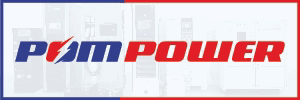Schedule a Call Back
Standardising production of non-circular gears
 Technical Articles
Technical Articles- Apr 07,16
Non-circular gears are making headway in many areas of application – in machines, engines, and pumps where they ensure perfectly tuned irregular power transmission.
 Non-circular gears are making headway in many areas of application – in machines, engines, and pumps they ensure perfectly tuned irregular power transmission. This allows the replacement of expensive direct drives, used to control the changes in power transmission electronically. The demanding production of the non-circular components does present a challenge, however. Currently the methods used, including EDM or gear shaping, are usually relatively expensive. The key question is, how can the components be produced more flexibly and more efficiently? The gear hobbing specialists at EMAG subsidiary KOEPFER in Schwenningen, Germany, have an innovative answer. Their new process makes it possible to machine mathematically definable non-circular contours on a standard hobbing machine, for significant reductions in production costs.
Non-circular gears are making headway in many areas of application – in machines, engines, and pumps they ensure perfectly tuned irregular power transmission. This allows the replacement of expensive direct drives, used to control the changes in power transmission electronically. The demanding production of the non-circular components does present a challenge, however. Currently the methods used, including EDM or gear shaping, are usually relatively expensive. The key question is, how can the components be produced more flexibly and more efficiently? The gear hobbing specialists at EMAG subsidiary KOEPFER in Schwenningen, Germany, have an innovative answer. Their new process makes it possible to machine mathematically definable non-circular contours on a standard hobbing machine, for significant reductions in production costs.
Circular gears are not always the best solution for transmitting power in a machine or engine – on the contrary: in some areas of application, the resulting regular transmission of power even causes problems or adverse side effects. For instance, when deep drawing a component, the stroke motion of the drawing machine needs to be quite irregular. The drawing action has to be very slow, but the stroke of the tool before and after should be as fast as possible. This safeguards the quality of the produced components while shortening the production cycle. Non-circular gears are ideal for producing this continuously recurring, irregular motion relatively easily and, above all, with high precision.
 Also practical for the automotive industry
Also practical for the automotive industry
Another practical application of non-circular gears can be found in the automotive industry. They are used in an engine’s timing assembly to prevent or compensate for undesirable oscillations. They do so by generating a kind of counter-oscillation in the system. As early as the 1980s oval bicycle chainrings provided improved power transmission when pedalling. Pump motors also benefit from non-circular gears, to cite another example. They help to adapt the flow of the pumped fluid perfectly to the overall system.
As their popularity increases, the search for an efficient way of manufacturing non-circular gears is being stepped up. Currently the complex geometric shapes are often still manufactured by EDM, sintering, or shaping. However, this incurs relatively high costs, especially at small and medium unit volumes – due to the need for new tools, for example. These methods are also relatively inflexible. Users are looking for solutions that make it possible to respond quickly to changing requirements in gear production – from circular gears to non-circular gears and back again.
Standard gear hobbing machine in action
From this perspective, machining by hobbing is an attractive alternative. This standardised process is highly precise and flexible. Non-circular machining does, however, pose a special challenge: “The non-circular form of the blank makes it necessary to continuously correct the position of the hob during the cutting process. But this can, of course, be done with the dynamic axes of a modern gear hobbing machine. What’s important is the perfectly synchronised control of those axes,” said Manuel Hofmeier from KOEPFER, pinpointing the essence of the challenge. The hobbing experts at the EMAG subsidiary have developed a new solution, which can be used as needed on all standard 160 and 300 machines types with the current control system – only their software needs to be modified. The machine is then fully prepared for non-circular machining. “That is the critical point. In the past, we have created customer-specific one off solutions for non-circular machining. Now we have a standardised solution. The mechanical components of the machines do not need to be modified for it,” confirmed Hofmeier.
 Perfectly synchronised machine axes
Perfectly synchronised machine axes
The user simply enters the mathematical data of the required contour into the software. The rest of the procedure depends on the component.
In the case of sharply eccentric contours, the blank itself will already be oval in shape. It is first measured in the machining area of the machine, and then the machine’s axes are synchronised to the position of the component. Next, the hobbing process starts.
Alternatively there is the option of taking an initially round blank and milling it to create an oval contour, for example. This is, however, only possible if the desired shape is not too eccentric.
In both cases, the machining process is carried out with perfectly synchronised and dynamic machine axes. The hob follows the exact contour around the component. The procedure ensures that the teeth are cut in precisely the shape required. “Our approach has major advantages especially for small and medium volume production,” explained Carsten Rautschek from KOEPFER. “The user takes a few minutes to set up the standard machine for the non-circular component, and can then produce a few initial prototypes, for example. The user could then return to high volume production of some other gear. The geometric data of the oval component is stored in the control system from that point on. Other methods cannot provide this kind of immense flexibility.”
“Extreme” gear shapes can be manufactured as well
Truly extreme gear shapes can be produced on KOEPFER gear hobbing machines as well. However, unlike the less extreme forms, these shapes cannot usually be defined in a mathematically simple way. Complex calculations and formulas are required. “In these cases, the software needs to be adapted for each application. Naturally we make our expertise available to our customers for this purpose,” said Rautschek. “Ultimately our machines make standardised volume production of any convex contour feasible. It’s a whole new dimension of gear hobbing.”
It will therefore come as no surprise that the gearing experts at EMAG KOEPFER believe their new tech-nology has very strong market potential. There are, for instance, many applications in the machinery industry or in logistics where alternating torques are required within one system or where the transmission of power is irregular. “Our methods ultimately make it a lot easier to develop the mechanical solutions required for these tasks, which in turn require non-circular gears. They are much more cost-effective to produce than, for example, an electronic direct drive with variable speed control. This realisation still has to get through to developers in many industries, of course. As that occurs, we are very well placed with our technology,” said development engineer Manuel Hofmeier in conclusion.
EMAG India Pvt Ltd, Bangalore. Tel: 080-42544400. Fax: 91-80-42544440. Email: sales.india@emag.com
Related Stories

India’s stainless steel demand rises 8% in FY25, says ISSDA
India’s installed stainless steel production capacity currently stands at 7.5 million tonnes, with a utilisation rate of around 60%.
Read more
Saatvik Green begins construction for new solar manufacturing plant in Odisha
The facility is being developed on land sub-leased from Tata Steel Special Economic Zone Limited (TSSEZL)
Read more
India set to attract over Rs 80 bn investment in energy sector at IESW 2025
Strengthening the Government of India’s role as a global manufacturing hub, India Energy Storage Week 2025 - hosted by India Energy Storage Alliance (IESA) - will provide a launchpad for multiple ..
Read moreRelated Products

Heat Exchanger Scale Removal Compound -hesr-300


Universal Tapping Machine -model Tr-10/15
Tapping
Machine Tools offers universal tapping machine -model TR-10/15.
Hi There!
Now get regular updates from IPF Magazine on WhatsApp!
Click on link below, message us with a simple hi, and SAVE our number
You will have subscribed to our Industrial News on Whatsapp! Enjoy











